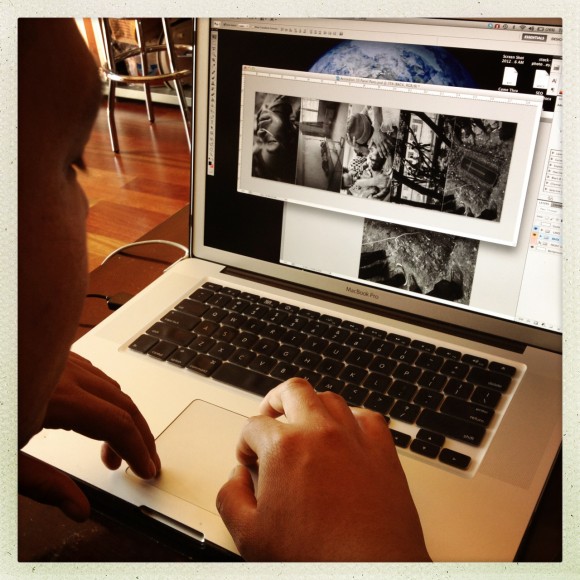
Editing and Designing collaterals © Andri Tambunan
Indonesian photographer Andri Tambunan has finally completed his long term project Against All Odds, a documentary report on the AIDS epidermic in Papua. The project recieved the inaugural Reminders Project Asian Photographers Grant and will be exhibited at the Angkor Photo Festival in December. In this series of articles, we invite Andri to share with us his experience and process pursuing his first long term project.
Since you spent so much time with your subjects, did you get emotionally involved? And did the way you photographed them change over time?
I spent much of my time with my subjects in their homes, shelters, and hospitals and got to know many of them personally. It was impossible to not get emotionally involved witnessing sufferings and deaths. I met a young guy about my age with AIDS who was in a pretty bad shape. I often visited him to check on his condition. I met his mother who never left his side. One night, the mother called me and asked me to come immediately to the hospital because her son had stop breathing and she thought that I was a doctor. I told her that I was a photographer but I would do my best to help her son. I arrived at the hospital within minutes and found her son unconscious and barely breathing. I immediately informed the attending doctor to check on his condition. The doctor looked at me and told me that he would die within the hour. Realizing that her son’s death was imminent, the mother asked me to help her get a priest to pray for her son. I called a priest and informed him of the situation and he agreed to come to the hospital. Surrounded by friends and family members, we prayed. The following day, miraculously her son survived and he was awake. The mother caressed his hand and she asked me to take a photo of them. A couple days later I returned to the hospital to give a copy of the photo. However, I found the mother with worried look in her face and she told me that her son had stopped eating. I told her that I would bring back some milk for him. An hour later I returned with the milk and found the mother crying over her son who passed away minutes before. Then I pulled my camera out from my bag.

© Andri Tambunan
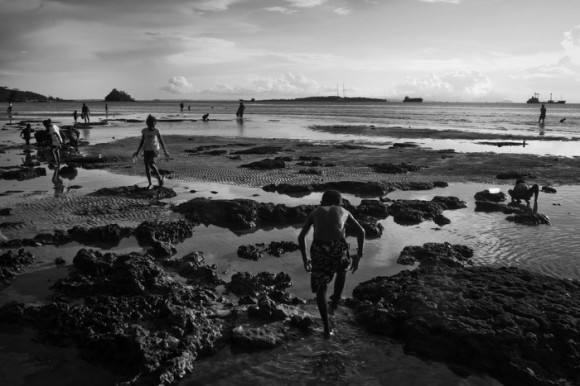
Sorong “Tembok” © Andri Tambunan
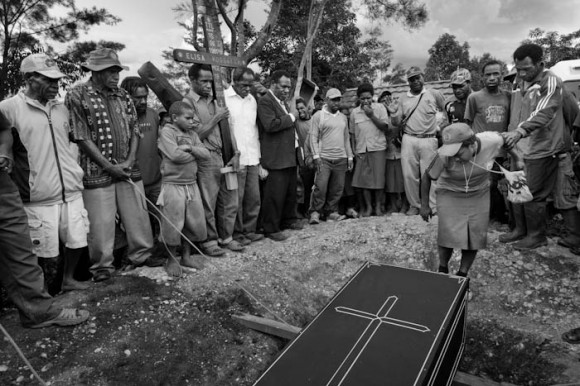
E.K. (30), a school teacher, passed away 3 days ago. Families, friends, colleagues, and students attended his funeral. I thought he was going to pull through, but his family waited too long to take him to the hospital. His mother told me that he had not been eating. I went to get some milk and when I returned he had already passed. © Andri Tambunan
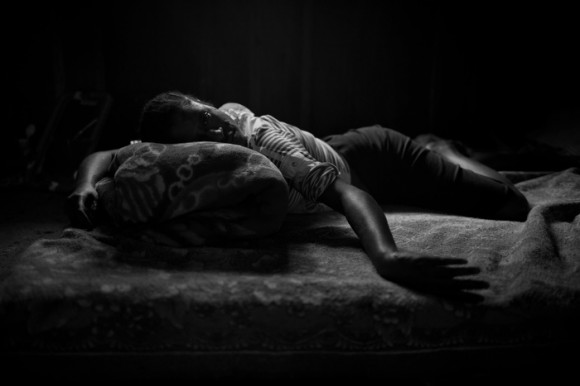
© Andri Tambunan
Initially, I had always wondered how photographers could take photos of pain, anguish, and death without getting affected from what they saw. Were they detached from the immediate reality? Perhaps after witnessing so much had they become callous to suffering and loss? Back to that moment when I pulled out my camera. Did I feel sadness? The answer is yes. I felt her sadness the same way my own mother would cry over me. However, I realized that this was a pivotal moment that I needed to document and it was necessary postpone my immediate emotional response. And I photographed the anguish in front of me while still concentrating on composition, lighting, and utilizing the frame.
A couple of hours later I returned to my room and transferred photos from my card to my laptop and external hard drive, a routine that I do at the end of each day. The frames appeared on my computer I relived each moment one by one. Without the camera shielding me the emotional tidal wave finally hit and I cried. Sadness, fear, and anger are normal emotional responses. But to do well in this profession it’s important to be able to control them. What happened is not as important as to what happens next. And sometimes the best thing to do is to wipe the tears and keep taking pictures. And at times the right thing to do is to put down the camera. This is perhaps the hardest call to make. Am I a photographer or a human being first? But in the end, I have to be able to live with the decisions that I made.
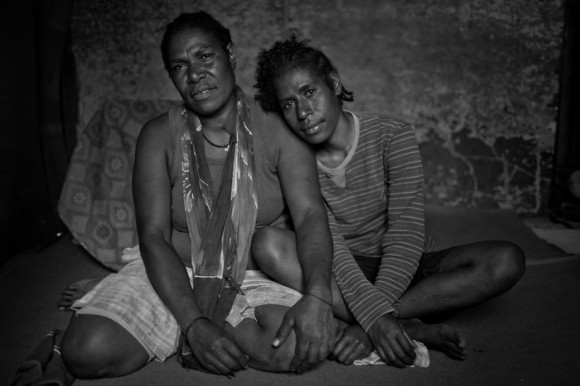
© Andri Tambunan
What gear and tools did you pack to help you? Did these change over time after each visit?
My first trip to Papua in 2009 I brought two 1D series cameras (1dsmkII and 1dmkIII) and a bunch of lenses (17-40mm, 28-70mm, 70-200mm, 50mm, 85mm, 100mm). Looking back I realized those weren’t ideal because they were heavy and drew a lot of attention. But I was a different photographer then. I was more naïve, reluctant to get close, and had a healthier back to lug those camera bodies.
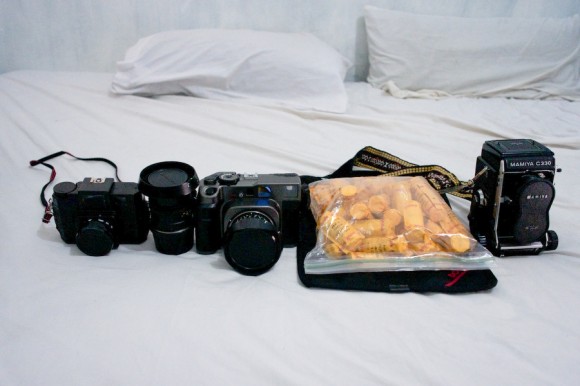
L-R: Holga, Mamiya 65mm Lens, Mamiya 7 w/ 43mm, Kodak Portra 400 120 films w/ Domke lead bag, Mamiya C330f. Not Pictured 35mm Panoramic Adapter for Mamiya 7.
For this recent trip I wanted to get closer and show intimacy. I opted for fast lenses and chose cameras that were lighter, more compact and inconspicuous. I also wanted shoot a portrait series with film and capture video. In the end, I brought a 5DmkII and shot mainly with 24L and 35L lenses. I packed a 28-70L and an LED light panel and used them for video interviews. For gathering sounds and recording audio with the 5DmkII, I brought Edirol R-09 audio recorder and Sennheiser ME64/K6 shotgun microphone. I shot the portrait series using a Mamiya 7 with 65mm lens (equivalent to 32mm focal length). For stealth shooting, I utilized a Ricoh GXR with 28mm and a Voigtlander R3A with 35mm lens. As for films, I brought 70 rolls (both 120 & 135, a mix of color and B&W) and a large X-Ray bag for airport securities and I stored them in the fridge when possible. To carry my gear daily, I used either a Domke F2 or FX-5 with the labels cutoff. A side note, originally I brought a Mamiya C330 with 75mm lens and a Canon 50mm 1.4 but I sent them back to Jakarta because I shot the portrait series with the Mamiya 7 and the 50mm lens was foggy and focused erratically after I fell in the water while covering the floods in Bangkok.
My full equipment check link is viewable on my blog (http://againstalloddsinpapua.blogspot.com/2011/12/equipment-check-list.html).

L-R: 24mm 1.4, 50mm 1.4, Canon 5DmkII w/ 35mm 1.4
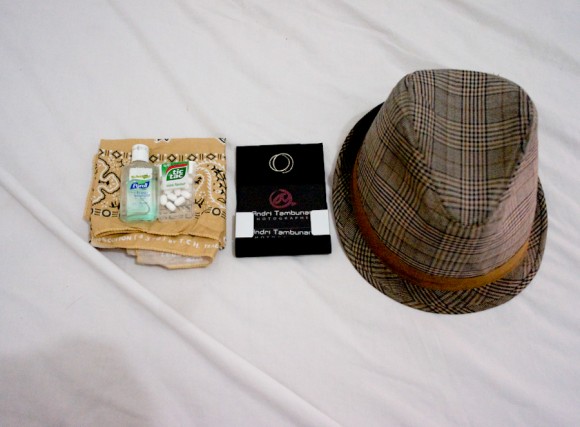
(hand sanitizer, tic tac, multipurpose rag, business cards, fake wedding ring, hat, not pictured pocket knife)
My advice for camera gears and other equipments: Prepare well in advance and bring things that you know you will use or can’t live without. At the same time, make sure your gears will not weigh you down or get in the way. Check your gears to make sure they function properly. If you know you will be gone for a while, bring enough (i.e. films) in case you run out or have extras/backups (i.e. batteries, memory cards, camera bodies, external hard drives) just in case shit happens. Finally, it’s worth it to get equipment insurance, especially when bringing thousands of dollars worth camera gears.
Check out Andri’s ‘Against All Odds’ Tumblr blog for more: http://againstalloddsinpapua.tumblr.com/
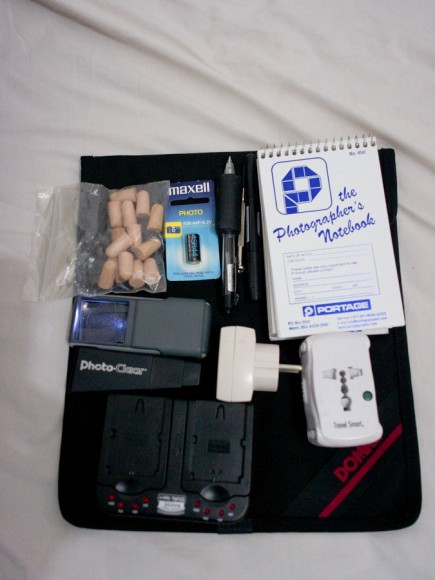
Most fits in a Lowepro Bag. Not pictured 15″ Macbook Pro, card readers, cables, camera rain cover, extra batteries, extra pair of glasses, and backup phone.
Read Part Three: Pt 3: Budgeting & Anticipating Worst-case Scenarios
Read Part One: Pt 1: Andri Tambunan, Against All Odds
Share

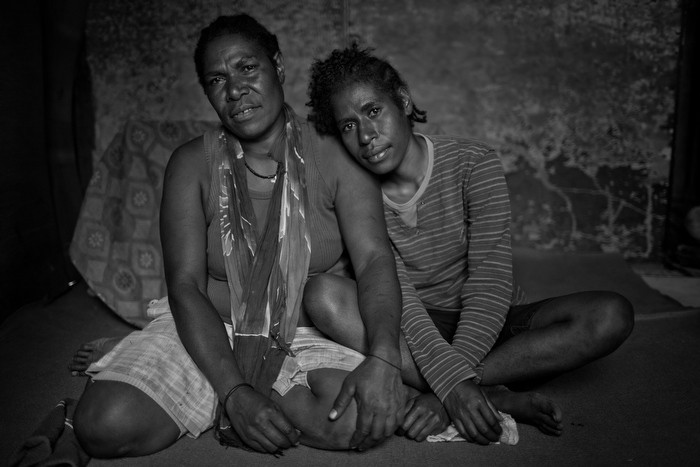
Comments 13
Great theme, but not well photographed
Photographer Andri Tambunan on his AIDS project in Papua and kit list: http://t.co/Fya2UZhh
Working on Long Term Projects Pt 2: Connecting with Subjects and Equipment Checklist http://t.co/xI2fc8DT
#Good Read –
Working on Long Term #Photo Projects: Connecting with Subjects and Equipment Checklist. http://t.co/X6UdKKnX
Part 2 – Working on Long Term Photo Projects: Connecting with Subjects and Equipment Checklist. #ipaphotoasia http://t.co/MlwlNkO8
Andri Tambunan interview: Working on Long Term Projects Pt 2: Connecting with Subjects and Equipment Checklist http://t.co/GFrPULEo
Andri Tambunan interview: Working on Long Term Projects Pt 2: Connecting with Subjects and Equipment Checklist http://t.co/GFrPULEo
Andri Tambunan interview: Working on Long Term Projects Pt 2: Connecting with Subjects and Equipment Checklist http://t.co/GFrPULEo
Andri Tambunan interview: Working on Long Term Projects Pt 2: Connecting with Subjects and Equipment Checklist http://t.co/GFrPULEo
Andri Tambunan interview: Working on Long Term Projects Pt 2: Connecting with Subjects and Equipment Checklist http://t.co/GFrPULEo
Working on Long Term Projects Pt 2: Connecting with Subjects & Equipment. #ipaphotoasia http://t.co/sP0Co2kw
Working on Long Term Projects Pt 2: Connecting with Subjects & Equipment. #ipaphotoasia http://t.co/sP0Co2kw
Working on Long Term Projects Pt 2: Connecting with Subjects http://t.co/eaS41Bdp #photojournalism